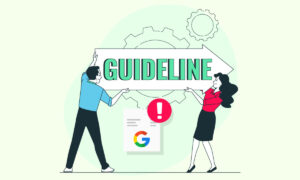Google released the first version of its Gemini 2.0 family of artificial intelligence models on Wednesday.
TakeAway Points:
- Google unveiled the initial iteration of its Gemini 2.0 family of AI models.
- The model, known as Gemini 2.0 Flash, is available to consumers worldwide in a chat version, and developers can access an experimental multimodal version of the model.
- Google’s most recent initiatives in the tech sector’s fiercely competitive AI race are embodied in Gemini 2.0.
- On Wednesday, Apple began incorporating ChatGPT from OpenAI into its smartphones, bringing a long-awaited feature that investors hope could boost sales of the company’s most recent iPhone models.
Google releases the first of its Gemini 2.0 AI models
The initial iteration of Google’s Gemini 2.0 family of AI models was made public on Wednesday.
Gemini 2.0 Flash, as the model is called, is available in a chat version for users globally while an experimental multimodal version of the model, with text-to-speech and image generation features, is available to developers.
“If Gemini 1.0 was about organizing and understanding information, Gemini 2.0 is about making it much more useful,” Google CEO Sundar Pichai said in a statement.
Google’s latest large language model outperforms its predecessors in the majority of user request areas, such as code generation and the ability to provide factually correct responses from user requests. One area where it is inferior to Gemini 1.5 Pro is when it comes to evaluating longer contexts.
How to use
To access the chat-optimized version of the experimental Flash 2.0, Gemini users can select it in the model drop-down menu on desktop and mobile web. It will be available on the Gemini mobile app soon, the company said.
The multimodal version of Gemini Flash 2.0 will be available via Google’s AI Studio and Vertex AI developer platforms.
General availability of Gemini 2.0 Flash’s multimodal version will come in January, along with more Gemini 2.0 model sizes, Google said Wednesday. The company said it also plans to expand Gemini 2.0 to more Google products in early 2025.
Gemini 2.0 represents Google’s latest efforts in the tech industry’s increasingly competitive AI race. Google is competing against the likes of rivals like tech giants Microsoft and Meta and startups like OpenAI, the maker of ChatGPT, Perplexity, and Anthropic, which makes Claude.
Along with the release of the new Flash model are other research prototypes aimed at developing more “agentic” AI models and experiences. Agentic models, according to the company, “can understand more about the world around you, think multiple steps ahead, and take action on your behalf, with your supervision.”
Last week, in a conversation with Andrew Ross Sorkin at The New York Times’ DealBook Summit, Pichai challenged Microsoft’s AI advancement, saying he’d “love to do a side-by-side comparison” of the two companies’ models “any day, any time.”
Apple adds ChatGPT to iPhone in latest iOS update
Apple on Wednesday started integrating OpenAI’s ChatGPT into its devices, delivering on a long-awaited feature that investors hope will help drive sales of its latest iPhones.
The rollout is part of a wider deployment of artificial intelligence-powered tools in the latest updates to the operating systems for iPhones, iPads, and Mac computers.
The ChatGPT integration, announced in June as part of the Apple Intelligence unveil, will allow the company’s Siri voice assistant to tap the chatbot’s expertise including on user queries about photos and documents such as presentations.
Users can also ask ChatGPT to create written content in any app that supports the new Writing Tools feature. They can use the chatbot’s image generation capabilities to add images.
The move comes during the peak holiday shopping season, the company’s most lucrative sales period of the year. The slow rollout of Apple Intelligence features so far has raised some investor worries about the strength of the iPhone 16 sales cycle.
The AI features will be available on the latest iPhone series, as well as the Pro and Pro Max versions of the previous iPhone 15 line-up. Users of iPad with A17 Pro or M1 chips and later and Mac with M1 chips and later can also access the tools.

































